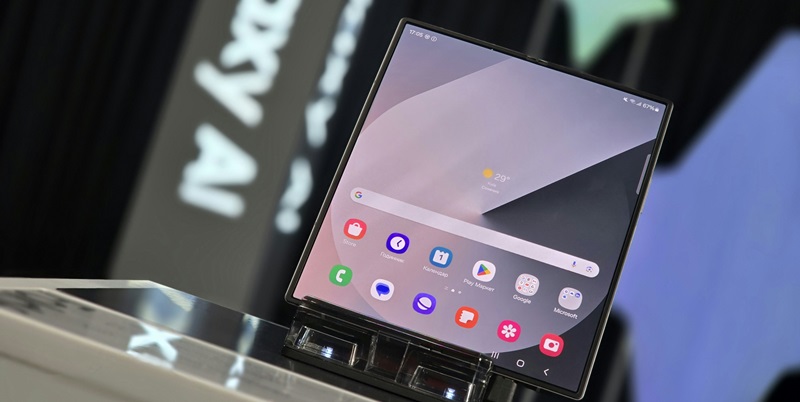Samsung is reportedly planning to introduce its first smartphone with a rollable display as early as 2025, potentially creating significant excitement in the smartphone industry. Advanced display technology has always been a key battleground for smartphone manufacturers, and Samsung’s ambitions with a rollable screen underscore its strategy to stay ahead of the curve. While competitors such as Huawei have recently launched advanced foldable phones like the Mate XT, Samsung is looking to surpass them with a rollable display that could redefine the user experience. The Mate XT’s 10.2-inch display, impressive in its own right, may pale in comparison to Samsung’s rumoured 12.4-inch rollable screen, pushing the boundaries closer to laptop-sized displays. This new device is expected to feature an under-display camera, further staking Samsung’s claim as an industry innovator and setting new benchmarks for future smartphones.
Recent trends indicate that while the market is still warming up to foldable smartphones, Samsung continues to push the envelope. The company’s latest foldable, the Galaxy Z Fold 6, features a 7.6-inch display but would be overshadowed by the proposed rollable screen. If Samsung successfully releases this device, it will mark the first rollable display smartphone to hit the consumer market, assuming no competitor manages to launch a similar product first. This positions Samsung not just as a leader in foldable technology but as a pioneer in a new category altogether. The anticipation surrounding this potential release highlights not only Samsung’s daring approach to innovation but also the growing consumer appetite for cutting-edge technology that combines both form and functionality. Therefore, a successful rollable smartphone could cement Samsung’s status as a market trailblazer, making it difficult for competitors to keep up.
Despite Samsung’s aggressive innovation, Apple has not yet entered the foldable or rollable smartphone market, with speculation suggesting a foldable iPhone could debut no earlier than 2026. This gap in Apple’s product lineup may give Samsung a golden opportunity to dominate this niche market. Apple’s cautious approach contrasts sharply with Samsung’s pioneering efforts to make foldable—and now rollable—phones mainstream. Samsung’s strategy underlines its potential to lead the market in rollable displays, providing a unique selling proposition that could attract a swath of new users who are early adopters of innovative technology.
The overarching trend reveals that while the industry is in the early stages of adopting foldable technology, Samsung’s strategy could accelerate the transition toward more advanced form factors like rollable displays. This innovation leapfrogs current market offerings, reflecting Samsung’s ongoing commitment to pushing technological boundaries and differentiating itself from rivals like Huawei and Apple. It’s a high-stakes game of technological one-upmanship that not only drives progress but also sets consumer expectations for what the next generation of smartphones could offer. This continued emphasis on innovation could well be the tipping point that finally brings rollable displays into the mainstream, transforming the user experience in ways we can only begin to imagine.
Samsung’s Potential to Reshape the Market
Samsung plans to unveil its first smartphone with a rollable display by 2025, which could revolutionize the smartphone industry. Display tech remains a fierce battleground for manufacturers, and Samsung aims to lead with this innovative screen. Competitors like Huawei have recently launched advanced foldable phones such as the Mate XT, but Samsung’s rollable display could set a new standard for user experience. Huawei’s Mate XT boasts a 10.2-inch display, but Samsung’s rumored 12.4-inch rollable screen might roll out closer to laptop-sized displays. Additionally, the device is expected to feature an under-display camera, further solidifying Samsung’s reputation for innovation.
While the market is still getting used to foldable smartphones, Samsung keeps pushing the envelope. Their latest foldable, the Galaxy Z Fold 6, features a 7.6-inch display, however, it would be overshadowed by the proposed rollable screen. If successful, Samsung would be the first to market with a rollable display smartphone, unless a competitor beats them to it. This initiative not only emphasizes Samsung’s leadership in foldable tech but also pioneers a new category. Apple has yet to enter this space, possibly launching a foldable iPhone no earlier than 2026, presenting Samsung with a prime opportunity to dominate this niche market.

